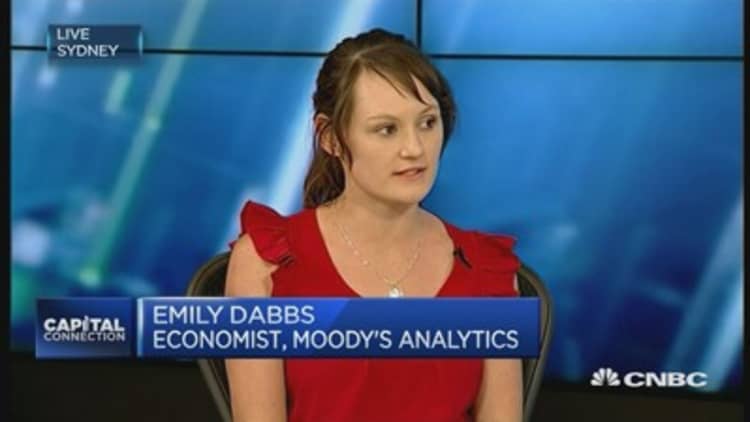Australia's jobless rate climbed to a 13-month high in February and employment unexpectedly fell, a risk to the outlook for wage growth and inflation that will likely keep open the possibility of another interest rate cut.
The Australian dollar slipped more than a quarter of a U.S. cent on the disappointing report to A$0.7689 from a three-week peak of $0.7720.
The jobless rate rose to 5.9 percent, compared with analysts' expectations for a steady 5.7 percent, data from the Australian Bureau of Statistics showed on Thursday.
Employment dropped 6,400 in February, also upsetting forecasts of an increase of 16,000.
The decline was led by a 33,500 hit to part-time work even as the number of full-time jobs rose 27,100 in the month.
Since February last year, part-time employment has climbed by 127,800 while full-time has slipped by 23,100, pointing to lingering slack in the economy.
"As such, the labor market is unlikely to generate much inflationary pressure for the foreseeable future," said Paul Dales, chief economist at Capital Economics.
"If the unemployment rate were to rise sharply, this could be enough to prompt a further rate cut by the RBA."

The Reserve Bank of Australia (RBA) has highlighted uncertainty over the labor market as a key risk for 2017, although it is also worried about financial stability should rates go deeper into record territory.
Over the past year, Australia's unemployment rate had stayed in a snug 5.6-5.8 percent range, but underemployment -- in which people want more work but can't get it -- is near historic highs.
Wage growth is already at record lows while inflation is likely to remain below the central bank's target band of 2-3 percent until next year at least.
However, leading indicators of labor demand have generally been positive.
Business surveys continued to strengthen in early 2017, and Westpac's latest Job Index has pointed to employment growth of around 2.75 percent by the third quarter.
Job advertisements are near a five-year peak while a survey of business conditions in Australia hit a near-decade high in January, with a healthy 5-point rise in employment pointing to some pick up in the labor market.

